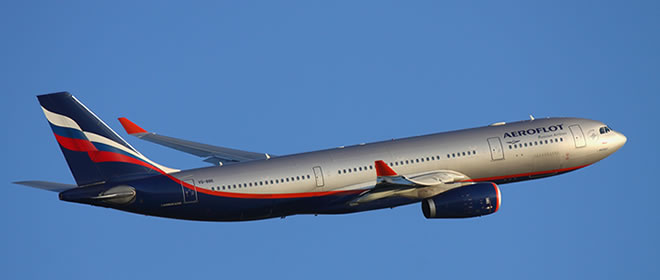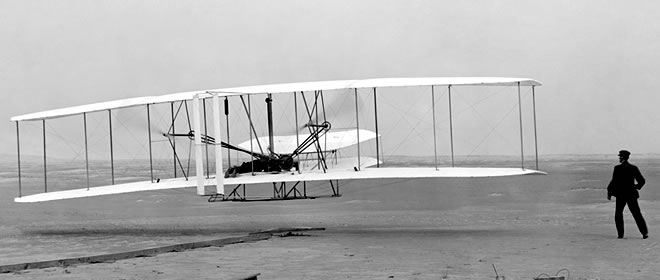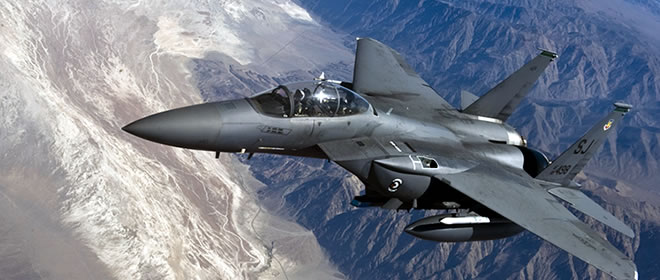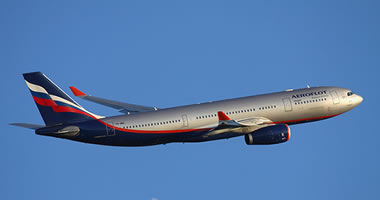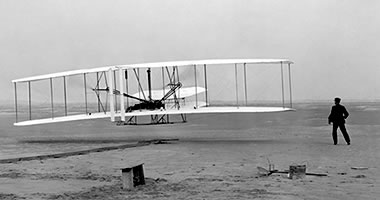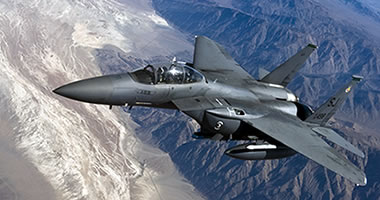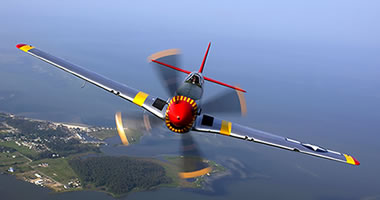Fairlop WW2
WARNING: NOT TO BE CONFUSED
For the nearby military FAIRLOP WW1 & HAINULT FARM WW1 airfields; please see seperate listings.
FAIRLOP: Intended site for a major London airport (See notes)
FAIRLOP WW2: Military airfield
Military users: RAF (Royal Air Force) Fighter Command
Note: This picture (2018) was obtained from Google Earth ©
As can be seen, no evidence of the WW2 airfield exists today. Which, in the general scheme, is quite unusual.
WW2: 1941 to 1946.
Established in 1941 with three hard runways as a significant airfield. An airfield rarely heard of today I suspect.
It appears that the first squadron to arrive here, in 1940, was 603 (City of Edinburgh) Squadron flying Vickers-Supermarine Spitfires. A search on the inter-web (my term) appears to reveal an astonishing number of other squadrons using FAIRLOP. I can of course only assume this information is correct. And, in looking up the histories of these squadrons, cannot verify exactly what types were flown here. But heh, this is only a 'Guide', and a lot of this stuff is really interesting.
Incidentally, other searches on the inter-web for squadron histories do not appear to mention any of these squadrons operating from FAIRLOP!
19 Sqdn (Vickers-Supermarine Spitfires, later North American P-51 Mustangs)
64 Sqdn (Vickers-Supermarine Spitfires, later North American P-51 Mustangs)
65 Sqdn (Vickers-Supermarine Spitfires, later North American P-51 Mustangs)
81 Sqdn (Flying Tiger Moths in France initially! Later Hawker Hurricanes before converting to Spitfires)
122 Sqdn (Vickers-Supermarine Spitfires, then North American P-51 Mustangs, latterly back to Spitfires it seems)
154 Sqdn (Vickers-Supermarine Spitfires - just possibly North American P-51 Mustangs at the end of the war?)
164 Sqdn (Hawker Hurricanes, Hawker Typhoons and lastly Vickers-Supermarine Spitfires)
182 Sqdn (Hawker Hurricanes then Hawker Typhoons)
193 Sqdn (Hawker Hurricanes perhaps (?), probably Hawker Typhoons)
195 Sqdn (Hawker Typhoons)
239 Sqdn (It seems that during WW2 this squadron flew Bristol Beaufighters, Curtiss Tomahawks, DH Mosquitos, Fairey Battles, Hawker Hurricanes, Miles Masters, North American P-51 Mustangs and Westland Lysanders). So take your pick. I have no idea which types they flew from FAIRLOP.
Note: It now appears, see comment below, that 239 Squadron only flew Mustangs here.
245 Sqdn (Hawker Typhoons)
Note: Although this squadron was, in the early years of WW2 flying Bristol Blenheims and then Fairey Battles, I rather doubt they flew these types from FAIRLOP?
247 Sqdn (Hawker Typhoons)
Note: This squadron also flew Gloster Gladiators and Bristol Beaufighters during WW2. But I very much doubt that either type was flown from FAIRLOP, and indeed, suspect the Hawker Hurricane wasn't either?
302 (Polish) Sqdn (Hawker Hurricanes, later Vickers-Supermarine Spitfires)
313 (Czech) Sqdn (Vickers-Supermarine Spitfires)
317 (Polish) Sqdn (Hawker Hirricanes, later Vickers-Supermarine Spitfires)
350 (Belgium) Sqdn (Vickers-Supermarine Spitfires)
411 (RCAF) Sqdn (Vickers-Supermarine Spitfires)
Note: The RCAF being the Royal Canadian Air Force.
602 (City of Glasgow) Sqdn (Vickers-Supermarine Spitfires)
603 (City of Edinburgh) Sqdn (Vickers-Supermarine Spitfires)
In 1944: RAF Balloon Command 24 Balloon Centre
Note: So there you have it. Could anybody kindly confirm that this information is correct?
Location: NE of Barkingside, just N of Aldborough, 3nm NE of Ilford
Period of operation: WW2: 1941 to 1946
Runways: WW2: 02/20 1006x46 hard 06/24 1463x46 hard
11/29 1006x46 hard
NOTES: For many years I had laboured under the misapprehension that the FAIRLOP WW1 airfield, and the WW2 airfield, obviously had to be on the same site. Until, by great good fortune in July 2017, Alan Simpson sent me this map he had been working on. This map came from a copy of a map in John Barfoot's book 'Over Here and Over There'.
A MICHAEL T HOLDER GALLERY
In 2023 Mike Holder, a great friend of this 'Guide', decided to investigate what else might be available in this area, with four/five aerodromes (!), and these are the results.
Please note that FOREST FARM was on, or very near, the western part of the WW1 FAIRLOP aerodrome. (See seperate listings)
The second aerial photo, c.1951 is the view looking SW. The excerpt is from Essex and its Race for the Skies 1900 to 1939 by Graham Smith. The airfield map is from the Potted History of Ilford by Norman Gunby.
These three excerpts are all from Action Stations.
This last item is also from Action Stations. Being a simple minded person, when I learnt to fly getting acquainted with the local area and then exploring further was of great importance. Navigation obviously paramount, but very much also, learning about the local area weather. For example I can remember arriving at WYCOMBE AIR PARK in a blizzard, the snow blowing past the windows in the Red Baron restaurant, nigh on horizantily, having a passenger from Australia.
I had a delivery for REDHILL, so any excuse to go flying. Said we would relax for a while and everything would soon be fine, and it was. Along the way flew through the snow and on arriving at REDHILL could have put chairs out to bask in the sun.So, here is the point I am trying to make, it can take quite a long time to become familiar with local weather conditions throughout the year. Indeed at WYCOMBE AIR PARK you can be socked-in with low cloud whereas at WHITE WALTHAM, a few miles south, they are still flying. But as can be seen from the history listed above, squadrons were being moved around often within weeks! I fail to understand how this can be sensible? Can anybody kindly explain?
AND FINALLY TO SUM UP
The area view is from my Google Earth © derived database. The history of this smallish area has, in effect six flying sites, three being situated just north of Forest Road. The first being the area used by Handley Page prior to WW1, which basically is of the same area used in WW1 by the RNAS and later RAF, both known as FAIRLOP. After WW1 a small aerodrome known as FOREST FARM was established at the western end of this location.
Later, and just to the east, the CHIGWELL aerodrome/airport was developed. Just south of Forest Road we have the later WW2 RAF FAIRLOP and just to the east of this was the WW1 HAINAULT FARM. I do hope this is clear enough? From memory I do not recall, now having in 2024 around 7,000 flying sites listed, any comparable situation.
THE EARLY DAYS
This information is all based on an article by Alan Simpson: 'Flying the Plain: How Croydon's rival was nearly built at Fairlop'. It needs to be born in mind that up until 1934 there was considerable pressure being applied by the LCC (London County Council) to open up Fairlop Plain for housing development.
"On hearing of LCC's plans, the Greater London Regional Planning Committee (GLRPC) argued that the land was essential for use as an aerodrome: in the previous year, the GLRPC had suggested that open space outside London's built-up area might be useful to the Government in time of war by providing locations for aerodromes and barracks; it considered Fairlop Plain to be 'the only flat site of any magnitude with suitable rail and road communications and unusual freedom from aerial obstructions so accessible to Central London on the eastern side'."
"The Air Ministry was also in favour of an aerodrome on Fairlop Plain stating that viewed 'with considerable apprehension the passing of the land into the builders' hands thus ruining a potential aerodrome site when there are so few remaining'." There is something to be explained here concerning the terminology being used. The term 'airport' was not in general use, and indeed appears to have been applied to 'Air Ports' such as Southampton where flying boats operated. Smaller airfields such as nearby CHIGWELL and MAYLANDS were usually regarded as Landing Grounds for example, despite the fact that scheduled services might be operating.
Today of course, and pretty much since WW2, the terminolgy has changed and quite naturally we often tend to use our more 'modern' definitions to define these sites. The term 'aerodrome' is derived from the French definition dating back to the pre-WW1 era, and meant, quite literally, an area in which flying takes place - and not just the area used for taking-off and landing. As a general rule most pilots pretty much flew within the confines of the 'aerodrome' so that the chances of a safe landing in the regular event of engine failure could better be accomplished.
This also explains why the early pre-WW1 aviators, prepared to fly across country, were hailed as, in modern terms - 'Super Stars' - and thousands would turn out, a major civic function arranged and quite often a public holiday announced, just to see even one daring pilot perform a 'display of flying'.
BACK TO FAIRLOP
"When Ilford Borough Council (BC) got wind of LCC's proposals it asked the Commissioners* to withhold a decision until the council had decided which it favoured - it soon plumped for a municipal aerodrome, approving the purchase of 1,064 acres on Fairlop Plain for that purpose. The Commissioners agreed to sell and, while maintaining an apperance of detached interest towrds LCC's housing scheme, they privately supported keeping the land as open as possible, later explaining that they had tried 'simply to invent every possible kind of public use which will preserve the property as a public open space of some kind in the future, while securing the revenue which we must, as trustees, secure'.
*These were the Crown Commissioners, and much if not most of the land was under their administration.
Is it just an 'age' thing? I now find this sort of stuff fascinating. Can we imagine today the concept of an airport being regarded as a public open space with a useful source of revenue? But some things don't change, just like Terminal 5 and the third runway at HEATHROW, a public enquiry ensued. "Ilford BC's purchase would have required a Government loan of £250,000. This was opposed by LCC, and a public enquiry was held in August 1935 at which Sir Alan Cobham spoke in favour of the aerodrome."
ANOTHER DEVELOPMENT
"At this point, the City of London Corporation ('the Corporation') began to stir, announcing that it had been looking for a suitable site to develop as a new airport for London. The Corporation was prepared to buy the land and develop a large airport there so, in June 1936, Ilford BC stepped down."
"This was a period when civil aviation was becoming an increasingly important element in Britain's international and domestic communications, and the Government had appointed several committes to look at its future. Two in particular (the Maybury Committe and the Cadman Committee) considered the need for and location of airports for London. By 1937, the Government was backing the idea that capital's requirements would best be served by a ring of airports on its periphery. This would be achieved by the expansion of two existing airports owned by the Air Ministry, one at Croydon in Surrey and the other at Heston in Middlesex, and the addition of two new privately developed airports' - at Lullingstone in Kent and at Fairlop in Essex. Croydon and Lullingstone were to 'standard' airports; Heston and Fairlop were to be 'super-standard'.
ISN'T THIS INTERESTING?
In effect what these far-sighted people had predicted has indeed come about. Obviously the jet-age could not possibly have been predicted, with the need for extra airspace needed for much faster airliners, and also in numbers that would have seemed utterly fantastic in those days. But nevertheless, London has exactly the same amount of four peripheral major airports they thought neccessary: GATWICK, HEATHROW, LUTON and STANSTED. I wonder what their reaction might have been if somebody had predicted that one day in the future there will be a very busy airport situated in the heart of the major docks in east London!
BACK TO THE STORY
"Bouyed up by the Governments's endorsement of the Fairlop location, the Corporation got on with its project to develop an airport there: it appointed an Airport Committee......acquired the necessary legal powers and selected the architectural consulting firm of Norman & Dawbarn to work out costs and to produce plans - £1,100,000 in total for a 'super-standard' airport with 2,000 yard concrete runways." This was quite an amazing concept, nothing like it had ever been seen before in the UK, and possibly not elsewhere in Europe or beyond?
Needless to say, after WW2 broke out, this concept of having concrete runways was adopted for bomber stations, as the new four-engine bombers needed 'all-weather' airfields to prosecute the bombing campaign, especially on targets in Germany. But, as far as I know, usually only one 2,000 yard runway was provided - for taking-off when fully loaded.
THE FINAL DAYS OF THE AIRPORT PLANS
As Alan Simpson has pointed out: "The Corporations Airport Commitee noted: 'Though the outbreak of hostilities has rendered necessary the suspension of further development for the present, the Committee hope that in happier times they may be allowed to continue their efforts to further the project...." It wasn't to be of course. By the end of WW2 the picture had changed entirely.
ANOTHER PURPOSE
Once again from Alan Simpson: "In 1940, much of the airport site was requisitioned by the Air Ministry for the construction of a military airfield, RAF Fairlop, which was declared operational in September 1941. Numerous squadrons were subsequently based there, until the last ones left in March 1944. Later that year, the airfield became a barrage balloon centre, and it finally closed in 1946." Here again one has to wonder what on earth was going on in the minds of the people in charge? The need for barrage balloons to defend London had pretty much passed in 1940. When the German bombers inflicting the 'Blitz' flew higher and across them.
THE END STORY
"The final nail in Fairlop's coffin came in 1953 when the Government published its London's Airports White Paper. Here Gatwick was proposed as the second London airport (Heathrow being the first) and it was announced that Fairlop Plain was unsuitable for use as a civil airport. Despite this blow to its plans, the Corporation's Airport Committee was not finally discharged until 1956." Today of course we can only wonder at the refusal of the Committee to accept the inevitable.
As Alan Simpson reports: "Towards the end of the Second World War, the Government began looking at what airports would be required for civil purposes and Fairlop featured in these deliberations. However, the development of aircraft technology during the war had increased rapidly, and it soon became clear that new airports would have to be considerably larger than had previously been thought. Furthermore, the post-war Labour Government's policy was that all airports required for regular scheduled services should be acquired by the State - which was not at all what the Corporation had in mind for Fairlop."
"Negotiations between the Corporation and Ilford BC continued until 1955, when council members learnt that they were to acquire 920 acres of Fairlop Plain. Within a few months, the extraction of sand and ballast had begun there. The former RAF site was used for a variety of activities before its buildings were demolished and its runways broken up in the 1960s; aggregate extraction then took place there too."
With all this said, it does appear that a limited amount of GA activity did occur after WW2.
THE PICTURE TODAY
"Extraction continues on parts of Fairlop Plain to this day, but the worked-out diggings on the site planned for Fairlop airport and its new station have been filled in and re-landscaped to form Fairlop Waters Country Park and a golf course." I would not be at all surprised to learn, if a survey was taken, that very few of those using these amenties today would have any idea about its history. Especially that for a few years in the 1930s it had the potential to rival the later HEATHROW as a major London Airport. Or did it? Plans were certainly mooted, but what nobody appears to have realised in those days, is that in southern England the prevailing winds are westerly - therefore the massive amount of airborne pollution created by London, often resulting in smog conditions, would be blowing this way! Which is why CROYDON was chosen of course, although even that airport had more than its fair share of fog problems.
ONE OF THE BENEFITS OF PRODUCING THIS 'GUIDE'
Over the last twenty five years in researching this 'Guide' I have been astonished by how much help, encouragement and advice has been offered. Plus, in recent years some kind people ask me for advice. And here is a fine example. In February 2025 I was contacted by Ms Annelie Andrew who sent me some pictures asking if I thought they were genuine? No doubt at all, all had the IWM, (Imperial War Museum) stamp on them.
All I think probably dating from around 1942 when No.64 Squadron were based here? Flying at this time the Vickers-Supermarine Spitfire Mk.XI.
I find Photo Four of some interest as I think I have not seen a picture of a Spitfire with a wing-walker. In this case clearly helping the pilot to align with the narrow taxiway. Another aspect is that all these pictures show them now being fitted with two cannons, rather than the eight machine guns previously used. These two cannons having far much more effective fire-power.
Photo Five is rather nice. Showing I think, judging from his 'Mae West' kit, another pilot having a friendly chat. No doubt before embarking on yet another danger filled mission.
Tony Clay
This comment was written on: 2017-08-09 11:29:14Hi there, Came across your website while doing some research of the Fairlop Plain area and I can confirm the following. RAF Fairlop was a satellite airfield to Hornchurch and as such many squadrons used Fairlop when Hornchurch was u/s. Other units used it as a stop over airfield which may last a week or a number of months. I can however confirm the following about what types flew from Fairlop and which squadrons operated them; 239 operated Allison engined Mustangs, 245 and 247 operated Hawker Typhoons Mk 1b`s from Fairlop. I have not found any information that 19 Sqn operated from Fairlop but it maybe that they flew in one day and left a couple of days later? Regards, Tony
Reply from Dick Flute:
Hi Tony, Many thanks, I shall keep this information posted and make a couple of adjustments. Best regards, Dick
Stephen Fowler
This comment was written on: 2018-06-08 19:17:24My parents were stationed at an area hear Fairlop in WW2. My mother was with the ATS and my father was with the Royal Artilery on 3.7 and Bofors AA Guns. Is there any links to their areas that I can explore? Regards Stephen
Reply from Dick Flute:
Hi Stephen, I am sure there are, but I am not aware what they might be. I have been generously afforded a great deal of help with this area. Best regards, Dick
Robert Bourke
This comment was written on: 2019-01-19 09:54:10I lived in a prefab by the side of the old Fairlop Airfield as a 10 year old in 1955, Did us boys have some fun in and out of the shelters playing at soldiers. I remember looking around for live rounds of 303 and other ammo that was left all over the site. From what I remember we did find some underground tunnels that were dark and scary to us.
Steve Hale
This comment was written on: 2019-10-09 22:27:09Just a short note to tell you that a short section of runway was unearthed and is preserved for posterity. There is also a very unconventional memorial to both RAF Fairlop and RNAS Hainault Farm, and site is now a country park with a resaurnat and bar on site
Peter Clarke
This comment was written on: 2020-04-29 07:27:03Hi, I have lived in Australia since 1964 having left England as a migrant. I attended Wm Torbitt primary and junior school from 1942 until 1948 which I really enjoyed. One morning (1943/44?) I arrived at school where there was great excitement amongst the pupils already there that two areoplanes had crashed just behind our school playing field. I have very clear memories of seeing the wreckage in the field close to the school railings as we boys pestered the the servicemen who were posted around the wrecks for information as to what had happened. We were told the planes were Typhoons that had crashed on taking off from RAF Fairlop. We were not told the fate of the pilots. Do you have any record or knowledge of this incident. Would be most grateful for any information.Thank you.
Ian Ross
This comment was written on: 2021-01-11 15:16:54Hi I have to say that living in NEWBURY PARK as a 5 year old in 1939 and ridden down PAINTERS LANE on many occasions on my bike during the war, I am very surprised at the number and types of aircraft reported to be stationed . at FAIRLOP Attending nearby Ilford County High 1945/50
We'd love to hear from you, so please scroll down to leave a comment!
Leave a comment ...
Copyright (c) UK Airfield Guide

